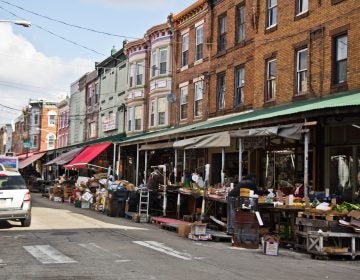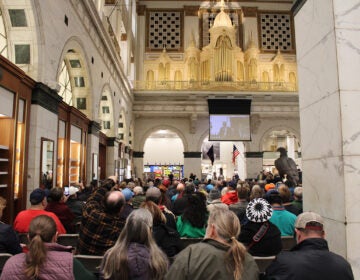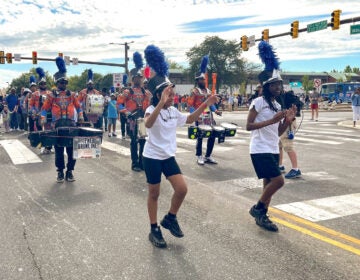Philadelphia family carries on palm-weaving tradition in the Italian Market
Victoria Ciliberti is a third-generation “palm lady” sharing her craft in the Italian Market ahead of Palm Sunday.
From Philly and the Pa. suburbs to South Jersey and Delaware, what would you like WHYY News to cover? Let us know!
On a rainy Thursday, stationed at a stand in the Italian Market, Victoria Ciliberti patiently weaves tough, green fronds together.
She is a “palm lady” carrying on an ancient tradition.
“I’m the third generation doing the weaving,” Ciliberti, 34, said. “So my great-grandmother and my great-aunt are the ones who taught me. My mom carried it on, and now she passed it on to me.”
Victoria deftly interlaces the yellow-green fronds under the watchful eyes of her mom, Cookie Ciliberti. Cookie, 59, said she feels “blessed” that Victoria is continuing the legacy.
“A lot of families don’t make them anymore, and it’s an old tradition that’s dying out, and we need to keep our traditions,” Cookie said.
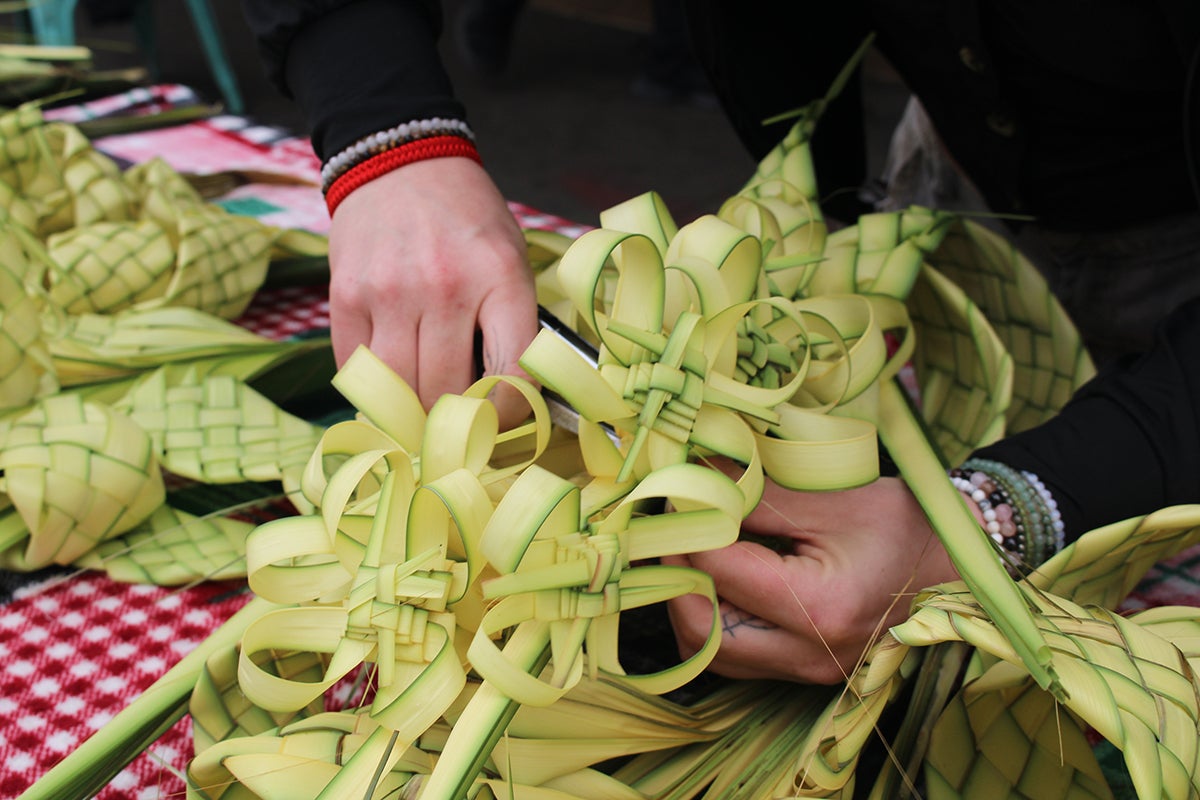
The palms are for Palm Sunday, which marks the start of Holy Week in the Catholic tradition. During Mass, many people will hold palms shaped into crosses, celebrating the Gospel story recounting Jesus’ entry into Jerusalem. In the Italian tradition, some people will take palm branches and lay them on their loved ones’ graves.
Across the world, the practice of weaving palm into intricate designs predates Christianity. In Italy, it became deeply tied to the Catholic faith, and Italian immigrants brought the tradition with them to the Philadelphia area in the late 19th and early 20th centuries.
In Italy, it’s common to see people walk through the streets with woven palm, Victoria said. The pope carries an elaborate woven palm during the Palm Sunday Mass. But the tradition is endangered both in the old country and in Philadelphia.
“This particular art itself is dying because no one is as hands on,” she said. “Like they get crafts and stuff, but they don’t do this particular thing. Even in Italy, they really don’t weave the palm the same way as they used to.”
Because there are fewer practitioners, Victoria said the family’s woven palms are in demand at parishes as far west as California and as far north as Maine. Priests who know of the family’s work will call and order woven palms. Each season, they make around 200 palms in a range of sizes.
“Not a lot of people do this, and it’s not from the grocery store either, because the ones you see at the supermarket are not the same pattern,” Victoria said. “It’s not the same way.”
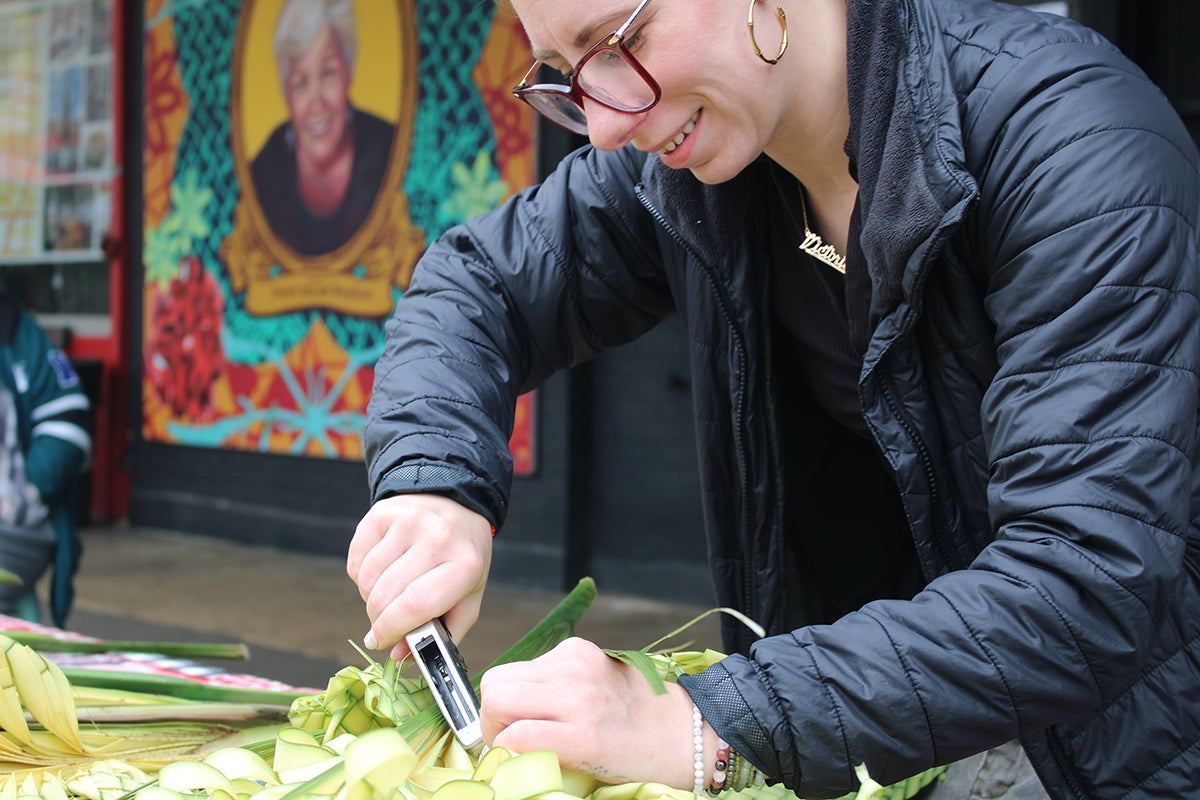
On Palm Sunday, the priests will carry the specially woven palms in the procession at the start of Mass and bless them, Victoria said. The palms can then be displayed for months and even years.
Unless they are preserved and hung in a person’s house, most palms used on Palm Sunday become the ashes used to anoint the foreheads of Catholics on Ash Wednesday, which marks the start of Lent, a period of 40 days of reflection and penance before the holiday of Easter.
The ashes of last year’s palms mark the arrival of this year’s “palm season,” Victoria said. The weavers start ordering their palms, usually from Florida or Mexico, that day.
“We always say palm season’s here because Ash Wednesday is here,” she said. “For us, it’s kind of like a rebirth.”
Aunt Betty Ann’s legacy
Victoria remembers her initiation into the palm-weaving circle at 7 years old. Her great-aunt, “Aunt” Betty Ann Mongelluzzo, owned a florist shop in the market, and Victoria and her sister often hung around there, doing odds and ends jobs to support the family business.
When palm season arrived, Victoria said she wanted to be a part of the “family bonding experience.” She remembers how the adults would sit in the shop for hours, drinking wine and cracking jokes while steadily braiding fronds and passing them down an assembly line of sorts.
“It was like being a part of the adult life without being an adult,” she said.
Victoria’s grandmother and great-aunt were first taught palm weaving as children more than 60 years ago by a nun at St. Paul’s School in South Philadelphia.
Cookie said the design that she and her daughter continue to use was created by Aunt Betty Ann.
“There’s a lot easier weaves out there that people still do … but we’ve never made them,” she said. “We’ve always made them this particular way.”
A mural by artist Michelle Angela Ortiz as part of the “Our Market” project now depicts a portrait of Betty Ann, looking out over Victoria and Cookie as they sell their palm designs at the nearby stand. Betty Ann died in 2019.
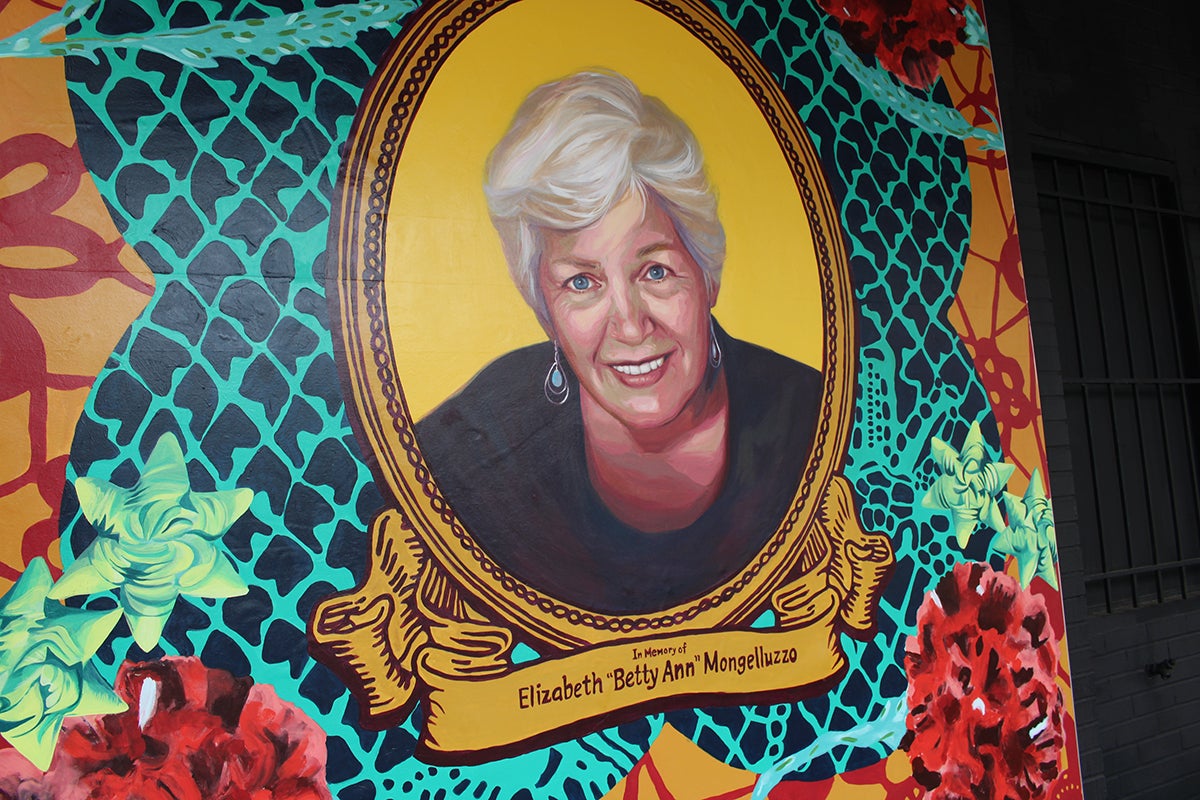
“Everybody called her Aunt Betty Ann,” Cookie said. “And we would laugh, because Betty Ann had no children of her own … When the artist came and asked us, I was like, ‘Okay.’ It was an honor for our family, for her to be remembered. She worked her whole life on the street.”
“She was a little spicy, but definitely sweet at the same time,” Victoria said. “Tell you what you needed to hear, but not always what you wanted to hear.”
For Victoria, it’s the connection to family that inspires her to continue to weave palm, which during “palm season” means spending two to three hours a night after getting home from her full-time job to craft the designs.
“I carry this tradition on because it reminds me of my family,” she said. “It’s something I’ve always done with my family. We’ve been the palm weavers for as long as I can absolutely remember, and it’s a way for me to still feel close to my aunt, as well as remaining close to my grandmom.”
‘The palm tells me what it wants to do’
The craft itself is tedious, careful work.
A palm weaver is at risk of getting paper cuts from the sharp fronds and might end up with back pain from hunching over the design for too long, Victoria and Cookie said.
“When you finish one and it’s all done, it’s this, you know, sense of accomplishment, where you took it from a stalk all the way to the finish,” Cookie said. “Because it’s a lot of work. And our hands feel it.”
Victoria said as a “seasoned young person,” weaving a larger palm design takes roughly 45 minutes; but for Cookie, it takes around an hour and a half.
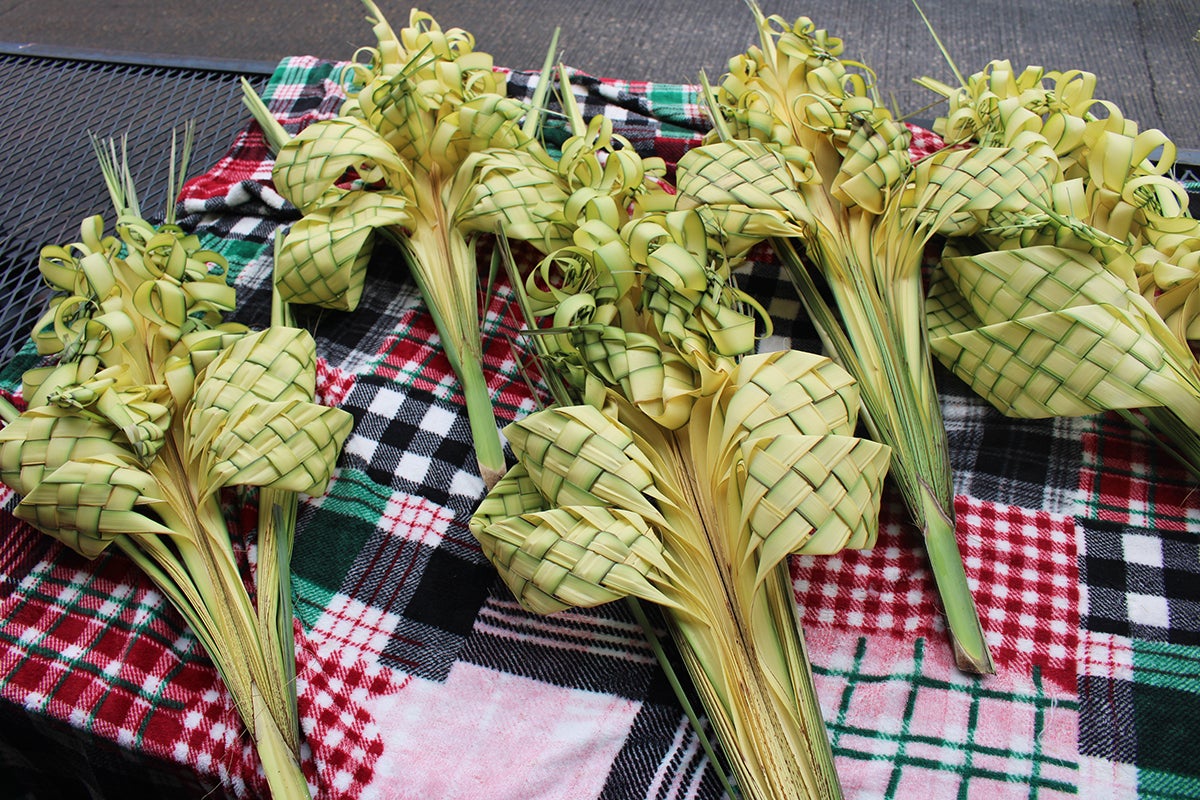
The most important part of the process is to let the palm guide the design, Victoria said.
“Each one of them is different than the other,” she said. “The palm tells me what it wants to do. It’s not like I’m gonna tell it. It tells me the color. It tells me how big it wants to be.”
Some years, the palm is more yellow. Other years, it’s more green. Because it’s “a live plant,” they have to “baby” the palm, Cookie said, to try to keep it wet and fresh ahead of Palm Sunday.
Victoria hopes to teach more people the tradition. She held a “Sip and Palm” class in the market Saturday, inviting people to learn, and even had someone invite her to their house to teach at their Palm Sunday dinner.
The craft is not well known , though, Victoria said, which means sometimes when she explains it to coworkers they misunderstand her. They think she is “reading palms” rather than weaving palms.
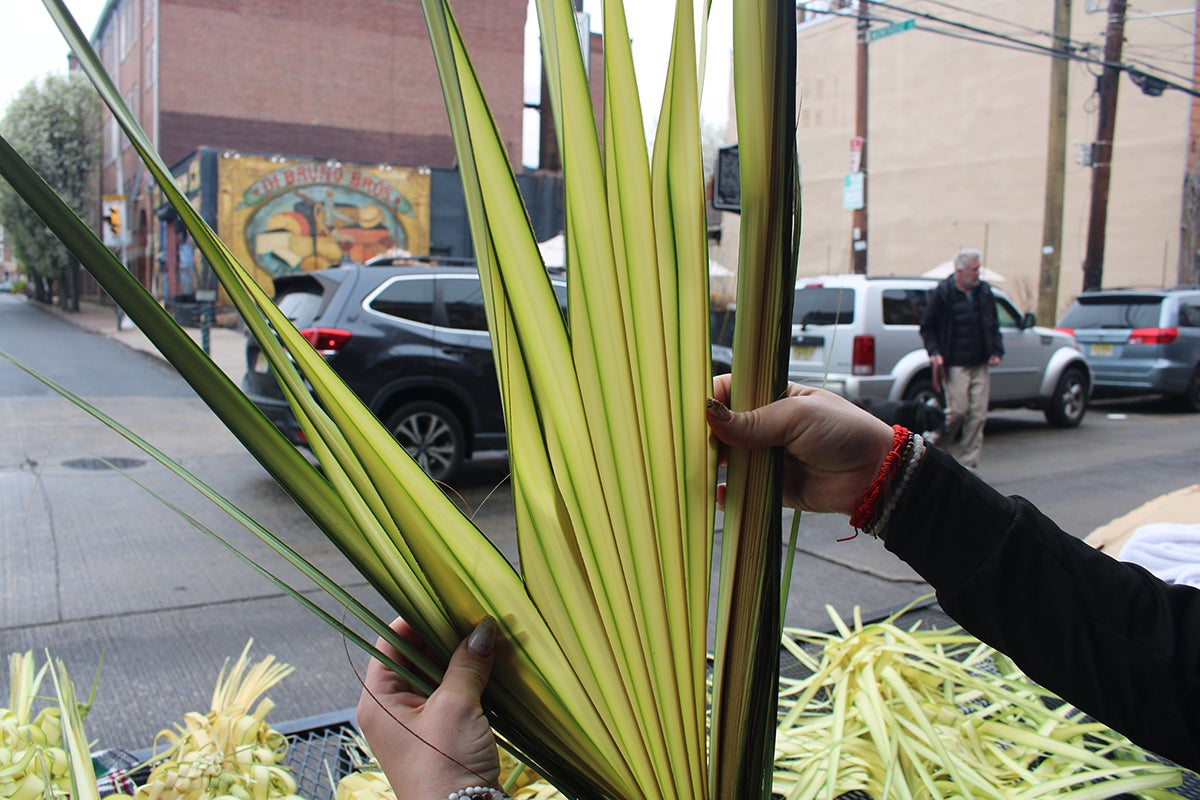
The family has been selling their craft mostly through word of mouth. Other customers stop by their stand in front of the visitor’s center at Italian Market, where they set up on different days during “palm season.” Victoria also advertises on Facebook and Instagram.
“When we used to have the flower shop, we would post more often on our Facebook, but now it’s really just me out here, like, ‘Hey, I’m still doing this,’” Victoria said. “‘I didn’t give up.’”
She said the diverse Italian Market community is supportive of the tradition.
“This whole neighborhood is like family to me, like there’s so many people who’ve watched me grow up, who know me, who know my mom, who know my family, who walk up to me and say, ‘I’ve known you since you were this big,’” she said. “ A lot of times when they get the palm from me, they’re so excited and so happy because they know that they’re still helping carry on this tradition.”
On Palm Sunday, on April 13 this year, Victoria and Cookie said they will be working, per usual, with added support from Victoria’s sister. But they also hope to find time to visit Aunt Betty Ann’s grave.
They plan to leave a woven palm for her, along with an unwoven stalk.
“We always joke, if we ever come back and it’s woven, we’ll know what happened,” Victoria said.

Saturdays just got more interesting.
WHYY is your source for fact-based, in-depth journalism and information. As a nonprofit organization, we rely on financial support from readers like you. Please give today.



